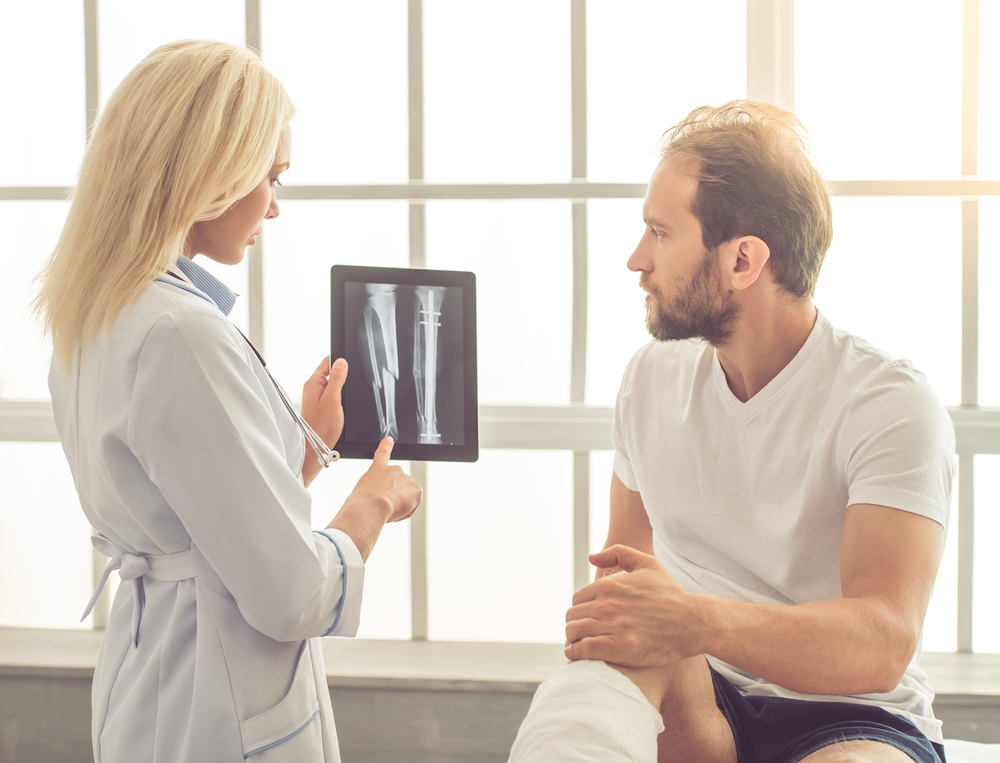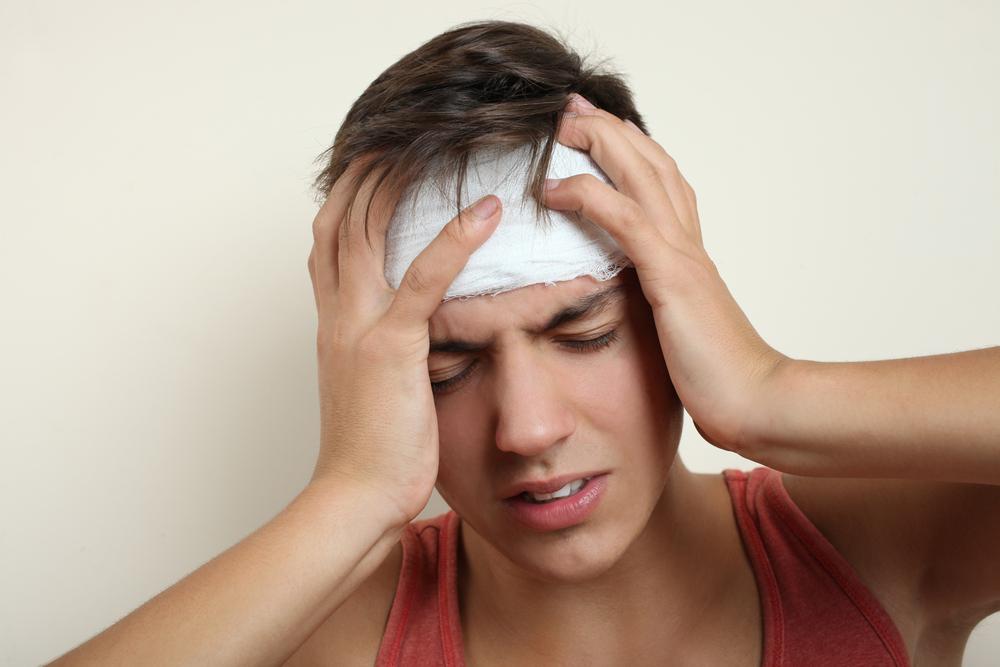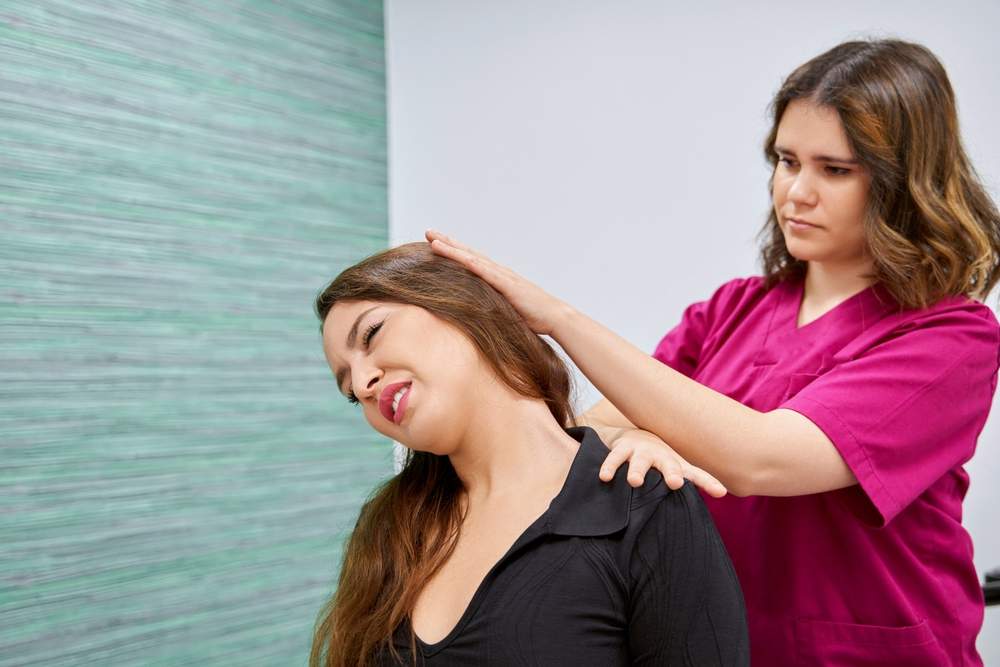 When you think of a car accident, you probably picture a fender-bender or rear-end collision pulled off to the side of the road. We see these kinds of minor accidents every day while driving to work, school, or even the grocery store. While some fender-benders can still be serious and result in car accident injuries, there is another type of car accident that can put you at greater risk. Side impact collisions, commonly referred to as T-bone car accidents, refer to when the front of one vehicle hits another vehicle at a 90-degree angle, making a “T” shape during the collision. T-bone car accidents can result in serious injuries that affect the driver and passengers in one or both vehicles. Here’s what you need to know about the most common injuries from T-bone car accidents.
When you think of a car accident, you probably picture a fender-bender or rear-end collision pulled off to the side of the road. We see these kinds of minor accidents every day while driving to work, school, or even the grocery store. While some fender-benders can still be serious and result in car accident injuries, there is another type of car accident that can put you at greater risk. Side impact collisions, commonly referred to as T-bone car accidents, refer to when the front of one vehicle hits another vehicle at a 90-degree angle, making a “T” shape during the collision. T-bone car accidents can result in serious injuries that affect the driver and passengers in one or both vehicles. Here’s what you need to know about the most common injuries from T-bone car accidents.
What You Need to Know About T-Bone Car Accidents
T-bone car accidents, or side-impact collisions, can cause significant damage to both the vehicles and their occupants.
Common Causes of T-Bone Car Accidents
Common causes of T-bone car accidents include driver error, like running a red light or failing to yield the right of way. If a driver isn’t paying attention to oncoming traffic in all directions, they risk colliding with another vehicle in an intersection or while turning. Poor weather conditions can also put you at greater risk for car accidents, especially if there is low visibility. Mechanical failures can also result in a T-bone accident.
Dangers of T-Bone Car Accidents
T-bone car accidents can cause serious injuries to the occupants of the vehicle because of how the impact occurs along the side of a car where safety features are less strong. The force of impact from a T-bone car accident can take you unaware and cause you and other occupants in the vehicle to get jostled around. Significant property damage may also occur with a T-bone accident to vehicles and nearby property.
What to Do After a T-Bone Car Accident
If you get into a T-bone accident, you should contact emergency responders and seek medical attention as soon as possible. Even if you don’t think you suffered any injuries, it’s important to get medical attention because some car accident injuries, such as whiplash, can have delayed symptoms that take hours or even days to appear. You should also document the accident, which can include taking photos or videos of the scene if it is safe to do so. This type of information can be useful if you need to file an insurance claim or take legal action.
5 Most Common Injuries from T-Bone Car Accidents
T-bone car accidents can result in a wide range of injuries depending on speed and force of impact. The position of occupants in the vehicles involved can also affect the type of injuries sustained in this type of accident. These are five examples of common injuries from T-bone car accidents.
Head Injuries
 Head injuries from a T-bone accident can range from mild concussions to more serious traumatic brain injuries. A sudden blow to the head or violent shaking can result in damage to the skull or tissues that help protect the brain. If you hit your head on part of the vehicle, like a window or the dashboard, then you could end up with a concussion. Signs of a head injury include headaches, dizziness, and disorientation. Depending on the type and severity of the head injury, you could also lose consciousness temporarily and have trouble understanding others or with memory.
Head injuries from a T-bone accident can range from mild concussions to more serious traumatic brain injuries. A sudden blow to the head or violent shaking can result in damage to the skull or tissues that help protect the brain. If you hit your head on part of the vehicle, like a window or the dashboard, then you could end up with a concussion. Signs of a head injury include headaches, dizziness, and disorientation. Depending on the type and severity of the head injury, you could also lose consciousness temporarily and have trouble understanding others or with memory.
Neck Injuries
Whiplash is the most common car accident injury and can also occur in T-bone accidents. The driver who hits the other car head-on can experience whiplash from the sudden back and forward motion when the vehicles collide. The driver and occupants of the car that gets T-boned can also suffer whiplash or other neck injuries when their upper bodies get jostled violently from side to side upon impact. Symptoms of a neck injury can include neck pain, tenderness, and soreness. You may also notice your neck becomes stiff and lose some range of motion when trying to turn your head from side to side.
Chest Injuries
Chest injuries may include bruising, lacerations, rib fractures, or even internal organ damage. While seat belts are designed to protect you in a serious accident from getting ejected from the vehicle, you could experience minor scrapes or bruises, especially if the belt goes across bare skin or is worn improperly. A sudden blow to the chest area can also result in serious internal injuries that should get checked out as soon as possible. Scrapes and bruises may be visible to the naked eye with chest injuries, but internal injuries can be more difficult to recognize. That’s why it is important to get medical attention as soon as possible.
Abdominal Injuries
A forceful blow to the abdominal area, also known as blunt force trauma, can also cause damage to internal organs like the liver, spleen, or kidneys. If your body strains against the seat belt while getting jostled around, this can also result in abdominal injuries. If you suffer any kind of damage to your internal organs with an abdominal injury, you could experience a range of symptoms, including pain, discomfort, dizziness, or even issues with bowel or bladder functioning. Additionally, if you notice any bruising or discoloration in your abdominal area, you want to see a doctor to get scans of the internal organs in the area to rule out any damage there.
Limb Injuries
Other common injuries from a T-bone accident include fractures or dislocations that impact your limbs. The sudden and forceful impact of a car accident can cause your arms and legs to get jostled around. Your limbs could collide with parts of the car or objects in the vehicle, resulting in an injury. Upper limb injuries can include a dislocated shoulder, a dislocated elbow, or a broken arm bone. Lower limb injuries refer to fractures and dislocations of the legs, knees, or ankles. Some broken bones can be obvious, causing sharp pain and restricted mobility. A dislocated shoulder or another joint can result in severe pain, inability to move the area, or even a visible deformity to the area.
Treatment Options for T-Bone Car Accident Injuries
 If you are involved in a T-bone accident, you should seek quality medical attention as soon as possible. Car accident doctors can provide you with comprehensive care, starting with an initial examination, diagnosis of your injuries, and then a personalized treatment plan. Here are some examples of treatment options for a variety of car accident injuries after a T-bone accident.
If you are involved in a T-bone accident, you should seek quality medical attention as soon as possible. Car accident doctors can provide you with comprehensive care, starting with an initial examination, diagnosis of your injuries, and then a personalized treatment plan. Here are some examples of treatment options for a variety of car accident injuries after a T-bone accident.
Pain Management
For mild injuries, your doctor may recommend pain management solutions that you can do from home. This can include over-the-counter pain medications, icing the area, and getting lots of rest. For more moderate to severe injuries, your doctor may prescribe medications to help with pain and inflammation. They may also recommend non-invasive options for pain management, like chiropractic care.
Chiropractic Care
A car accident chiropractor offers natural treatment solutions for a wide range of car accident injuries, including whiplash, broken bones, and soft tissue damage. Chiropractors use therapeutic adjustments to help realign your spine and joints, which supports healthy functioning in the body. Chiropractic care for a T-bone car accident injury can also help you relieve pain naturally by promoting the body’s natural healing abilities. Head, neck, and back injuries are common with car accidents, and a chiropractor can work with you to resolve misalignments in your spine that can cause uncomfortable symptoms like pain, tingling, and numbness.
Physical Therapy
Physical therapy offers a wide range of treatment options and support while you recover from a T-bone car accident. A physical therapist will create an individualized plan of care that will help you experience pain relief, increased strength and mobility, and more. Physical therapy for car accident injuries will typically include stretches and exercises that target the injured area as well as the rest of the body. For example, if you suffer whiplash after a T-bone accident, then a physical therapist may walk you through techniques to improve the range of motion in your neck and strengthen your upper back muscles that support your head and neck.
How a Team of Car Accident Doctors Can Help
If you’ve been injured in a car accident, visit AICA Orthopedics for a Marietta car accident doctor near you. Our team of car accident doctors at AICA Orthopedics includes orthopedic surgeons, neurologists, chiropractors, and physical therapists who work together to provide you with comprehensive treatment and care. When you visit AICA Orthopedics in Marietta after a car accident, you can get important diagnostic scans you need, like X-rays or an MRI, all in one convenient location. Marietta car accident doctors at AICA treat a wide range of injuries that can affect you from head to toe. Call or visit us today to get started on a personalized treatment plan to help you recover from your injuries after a T-bone car accident and get quality, professional support while you recover and rehabilitate.